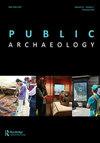Thinking Like an Archaeologist: Raising Awareness of Cultural Heritage Through the Use of Archaeology and Artefacts in Education
IF 0.9
4区 历史学
0 ARCHAEOLOGY
引用次数: 11
Abstract
This research is based on a qualitative descriptive study of students’ responses to an educational and archaeological project developed in a secondary school in Cartagena, Spain, from 2012 to the present. It aims to analyse instructional experiences that include secondary school students as active agents in the history teaching and learning process. To achieve that aim, an archaeological site was recreated in the schoolyard and a series of activities were designed to introduce teenagers to the interdisciplinary processes of archaeological methodology. The analysis of this experience showed that working with archaeological evidence promotes the construction of historical thinking and reasoning through the analysis of artefacts. Similarly, the development of an archaeological methodology leads students to launch inquiries and construct hypotheses based on them. This lets students gain knowledge about history and historical processes, as well as take part in its construction in an active and reflective way. Students also learn the importance of preserving archaeological heritage as they assess its value as a source of knowledge. The outcomes of the project are presented here, and compared with results from similar initiatives at different educational levels and contexts. It is argued that the introduction of archaeological methodology in educational settings proves to be a valuable and effective resource.像考古学家一样思考:通过在教育中使用考古学和人工制品提高对文化遗产的认识
本研究基于对学生对2012年至今在西班牙卡塔赫纳一所中学开展的教育和考古项目的反应的定性描述性研究。它的目的是分析教学经验,包括中学生作为积极的主体在历史教学和学习过程中。为了实现这一目标,学校操场上重建了一个考古遗址,并设计了一系列活动,向青少年介绍考古方法的跨学科过程。对这一经验的分析表明,通过对文物的分析,利用考古证据促进了历史思维和推理的构建。同样,考古学方法论的发展也会引导学生展开调查,并在此基础上构建假设。这让学生了解历史和历史进程,并以积极和反思的方式参与到历史建设中来。学生们也学习了保护考古遗产的重要性,因为他们评估了考古遗产作为知识来源的价值。项目的成果在这里展示,并与不同教育水平和背景下的类似举措的结果进行了比较。本文认为,在教育环境中引入考古学方法是一种有价值和有效的资源。
本文章由计算机程序翻译,如有差异,请以英文原文为准。
求助全文
约1分钟内获得全文
求助全文

 求助内容:
求助内容: 应助结果提醒方式:
应助结果提醒方式:


